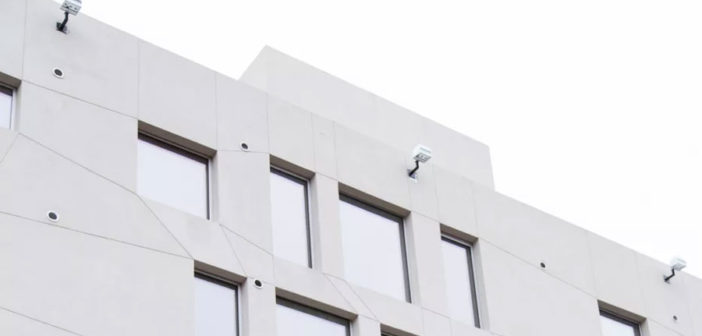Is America ready for a passive house revolution? Justin Palmer is betting on it.
Even in person, the faceted facade of Perch Harlem appears almost like a rendering, its asymmetric collage of windows standing out in a historic neighborhood best known for its brownstones. The recently completed seven-story apartment complex, developed by Synapse Development Group with Taurus Investment Holdings, doesn’t just look like a vision of the future—it’s actively trying to shape that future by bringing innovative energy technology to New York City’s rental market.

“It’s a state-of-the-art building, and the neighbors are quiet,” jokes the 36-year-old CEO and founder of Synapse, Justin Palmer, as he hosted a tour of Perch on a late winter afternoon. He’s referring to the Trinity Church Cemetery and Mausoleum across the street, but also to the calming quiet inside the virtually airtight building. Perch is the first market-rate rental building in the city designed to Germany’s rigorous Passivhaus energy-efficiency standard. To achieve passive certification with the Passivhaus-Institut, buildings must perform to specific energy metrics across four main criteria: heating and cooling energy usage, general energy usage, airtightness, and temperature range. With triple insulation, windows strategically placed and sized to maximize natural solar heat, and high-tech heat exchangers that recycle air to heat and cool its interior, Perch is constructed to passive specifications to reduce up to 90% of gas and energy usage by that of a traditional building.If Palmer has his way, the Harlem building will be just the first of several Perch locations across the country–an ambitious vision of a new era of energy efficient architecture in the U.S.
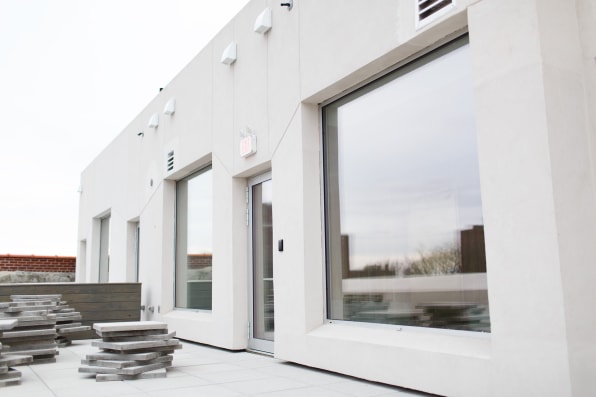
Despite its reliable and long-term energy savings, Passivhaus remains less common than the U.S. Green Building Council’s prevailing LEED certification system. The number of passive-built structures is slowly growing in the U.S., particularly in New York City, which counts more than 70 passive structures, including at least 27 in development. Yet it is far from being as widely adopted as it is in Europe, notably in Scandinavia, Austria, and Germany, where the Passivhaus-Institut was founded in 1996. There are more than 20,000 certified passive buildings worldwide today.Palmer believes we’re on the cusp of seeing Passivhaus popularity surge stateside, thanks to shifting cultural values and pressing environmental needs. He’s angling to lead the charge as an early disruptor in the passive rental market, a bit like Tesla was for electric cars. “One of the goals we had was to build this at market rate, so that we could prove it could be done,” he says. “We really look to a design company like Tesla for a lot of inspiration, because everyone was a naysayer. The traditional car manufacturers told them, nobody will ever buy it, you don’t have enough range, it can’t be done. Well, we heard it all, too.”
When he arrived in New York City in 2005, Palmer cut his teeth working for the real estate investment management firm Clarion Partners, which manages $44 billion in assets globally, before joining Lehmann Brothers in 2009, shortly after the collapse of the housing bubble, “which was an interesting move,” he says, with a chuckle. “I wanted to really focus on New York City and development, and they provided an opportunity for me to work on some pretty big and complicated projects, which I thought was valuable for next steps in my career.” He rose to assistant vice president in less than three years. “People told me that I was crazy; they’d say things like, ‘You know they’re bankrupt, you’re going to work yourself out of a job.’” he recalls. “I didn’t know exactly what direction I was headed, but part of the intention was to find a path to being an entrepreneur in the real estate space.”
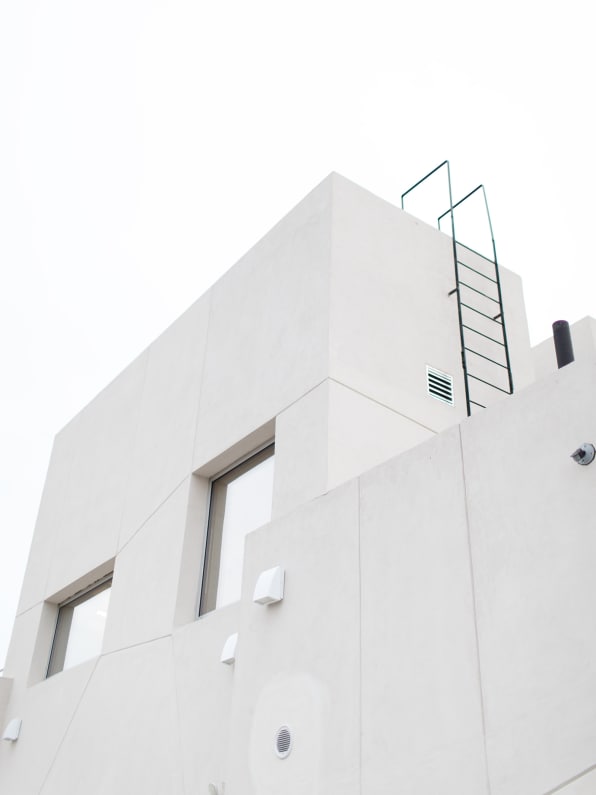
Palmer now leads a tight ship of five at Synapse, founded in 2012 with the promise to do things a bit differently. The firm has built a foundation of projects geared toward adaptive reuse, including San Francisco’s Yotel hostel, for which they completed an extensive renovation of the historic Grant Building, as part of its focus on developing “low-impact living” properties that place environmental interests alongside those of investors and tenants.
“We started getting into building science, trying to understand: What’s the most efficient way to rehab a building? What’s the most efficient way to design a building?” says Palmer, who began hatching plans for Perch in 2013, visiting labs at 3M and DuPont to research the latest building engineering systems. “We took the opportunity to build a higher-end, fully passive structure, thinking, okay, if we’re going to build this from scratch, let’s build the right way and still include all of the things other developers focus on.”
Perch Harlem broke ground in 2015. When it topped out the following year, some deemed it an “aggressively eco-friendly” building. That a real estate developer should focus so intensely on extrinsic value, beyond the direct bottom line, might seem odd, even counterintuitive, for a notoriously ruthless industry driven by profit. Palmer doesn’t see it that way, and laces his words with optimism as he tells me he thinks it’s time the “dinosaur industry” reevaluated how it leverages risk and profit. Building passive is necessary for a changing climate, both figuratively and literally, he says, and the energy cost-savings are a win-win scenario for developers and tenants. “We’re trying to provide a solution to the high carbon footprint that most cities have from the built environment, as well as solve the ongoing affordability issue through intelligent design,” Palmer says, and through reliable energy-performance metrics, “provide better risk-adjusted returns to our investment partners.”
I don’t disagree with his logic, but it raises an obvious question: Why haven’t more real estate developers and owners also jumped to adopt Passivhaus standards?

“Passivhaus, the organization, has been terrible at marketing,” Palmer says, addressing a handful of misconceptions that persist to this day. Despite its name, Passivhaus (which simply translates to Passive House) applies to more than just homes, though it’s certainly easier to meet the stringent standards with a smaller-scale structure.He’s also speaking to the political rift between Germany’s Passivhaus-Institut (PHI) and its American counterpart, the Passive House Institute U.S. (PHIUS), which was established in 2007 and cut loose in 2011 when PHI deemed the PHIUS certification process too lax to uphold the standard. With a fragmented certification process, as well as a nonstandardized set of guidelines for how to achieve them (optimizing solar gains, a core passive strategy, vary by climate and region), it’s easy to see why LEED’s more direct process—which operates by a points-based awards system—has been able to succeed and develop into a multibillion dollar industry.
“I see LEED as, like, a novelty; I think it’s backed by a lot of marketing dollars. In concept, the social values are the same, but LEED didn’t take it to the level of science,” says Palmer, skeptically. “We’ll see what happens. Typically over time, the better innovation prevails. We wouldn’t pursue LEED at an additional cost, because where’s the return?”
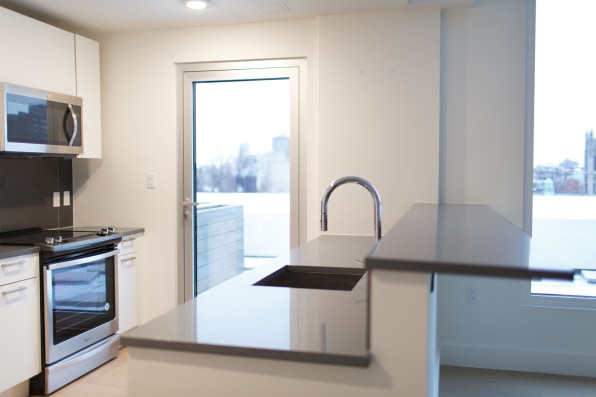
To be sure, LEED has not been without criticisms; in some ways, it’s the equivalent of being graded by way of a standardized test, rather than by performance of individual merit. And loopholes exist: When the first high-rise to achieve LEED Platinum certification—Durst Organization’s Bank of America Tower, designed by COOKFOX Architects in Midtown—opened in 2010, it was hailed as a benchmark for sustainability. Al Gore even endorsed it and joined as a tenant. By 2013, the New Republic was reporting that “New York’s ‘greenest’ skyscraper is actually its biggest energy hog,” consuming more energy than most other office buildings its size and more than twice as much per square foot than the 80-year-old Empire State Building. (Durst’s retort followed in the Observer: “The Empire State [Building] uses less energy because it has substantial vacancies.”)The takeaway? Energy efficiency is just one category on LEED’s rubric—other areas include water, waste, and transportation—and because its broader prerequisites vary from Passivhaus, final score tallies don’t necessarily equate to measurable data or savings.
Despite its imperfections, LEED accreditation remains a desirable trait, holding marketable cache for developers, vendors, and buyers alike, incentivized by government dollars and tax credits. Compared to Passivhaus’s 20,000 certified buildings worldwide, LEED has more than 92,000 across 65 countries and territories. Those numbers may contain some overlap. In 2016, the U.S. Green Building Council even began to promote applying PHIUS certifications toward credits for LEED accreditation.
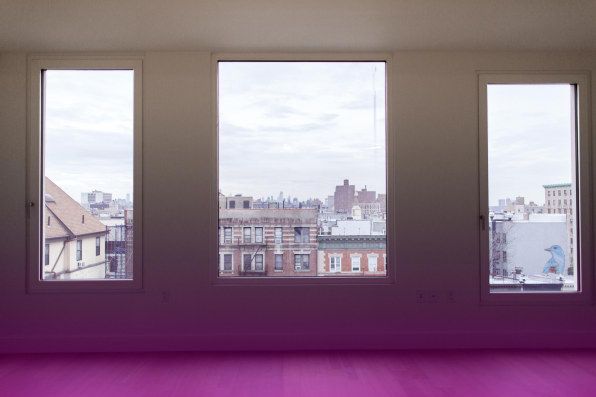
Palmer hopes Perch will help tip the scale towards passive techniques and gain an edge among a younger, savvier generation of renters who place a higher premium on shared values–especially as they pertain to an environmental greater good. He and Brooklyn-based architect Chris Benedict, who has a track history of successfully building to passive standards at no extra cost, received certification for Perch from both PHI and PHIUS. “We’ve taken a really data-driven approach, saying, ‘Look, here’s our engineering model, this is what we’re going to produce on a per-square-foot basis from an energy perspective,” Palmer says.He explains that the value proposition for investors is also clear: Passive-certified structures produce reliable data and metrics that equate to energy-cost savings over time. Saving 90% on energy usage, as Perch does, is a compelling number for potential investors. “Just like any other product, you have to prove your concept, and we were fortunate that we had investment partners to let us do that,” he says.
As Synapse works to rent out the remaining units in Harlem–currently at 60% capacity, early tenants include young families, an architect, and a Columbia professor–Palmer is continuing his plans to expand Perch into a full-fledged line of passive-built developments in additional locations, beginning with Brooklyn, where a multiunit passive-built residence is underway in Williamsburg. “You can lower operating expenses by making the building more efficient,” says Palmer, who is currently looking to expand Perch into additional urban markets across the country, including Los Angeles, Austin, Seattle, and Nashville. “If we can provide more value through design, I think it’s a winning proposition for everybody.”
“All we did was find a new way to market Passivhaus, and there’s value in that,” he adds. “We’re trying to build a community around aesthetics, efficiency, and a value system. I think if we can do that on a large scale, it’s going to change cities across the country.”
–
This article first appeared in www.fastcodesign.com
Seeking to build and grow your brand using the force of consumer insight, strategic foresight, creative disruption and technology prowess? Talk to us at +9714 3867728 or mail: info@groupisd.com or visit www.groupisd.com

